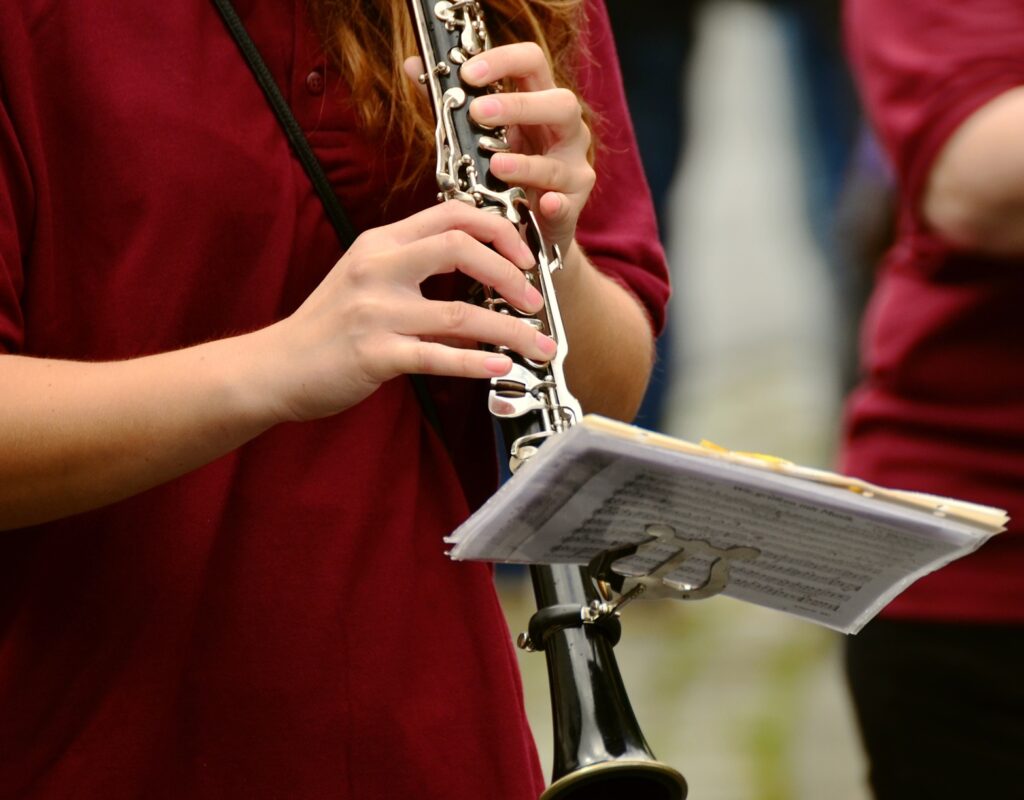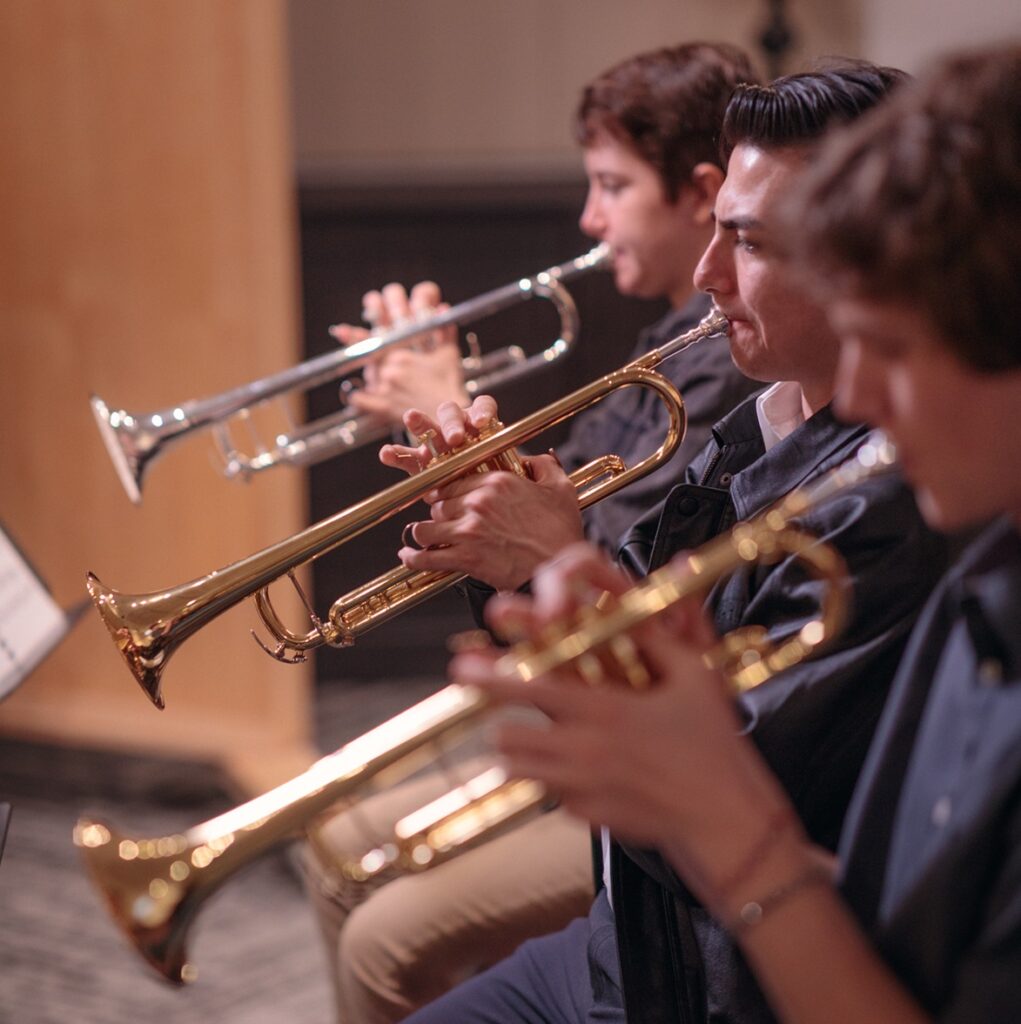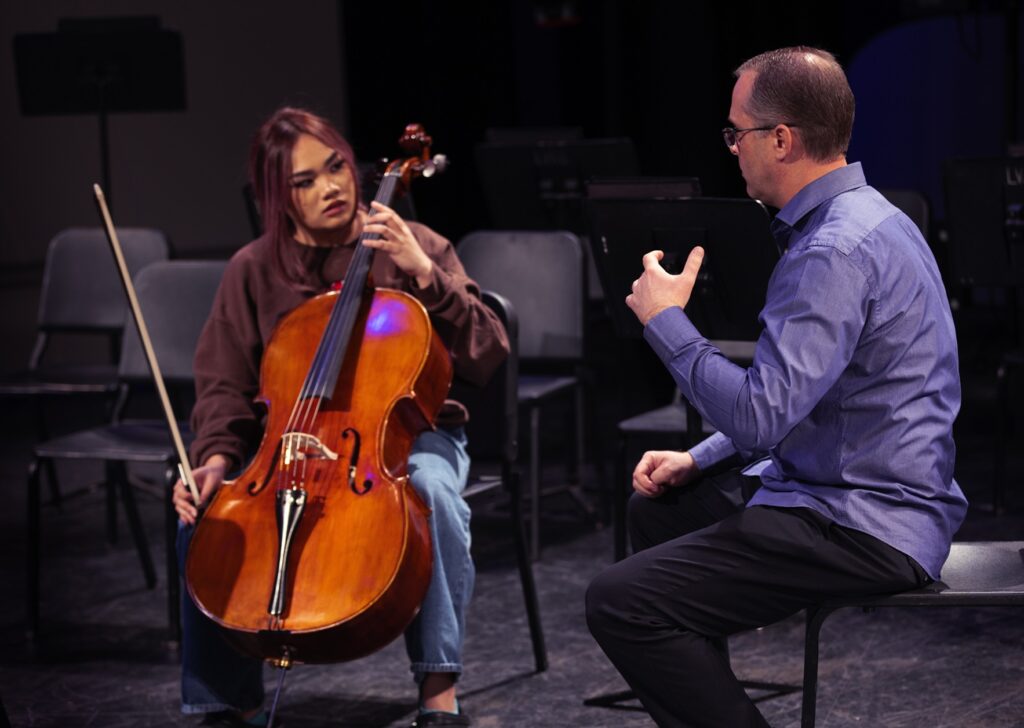Tagged Under:
Tech in the Choral Classroom
Incorporate referencing, playback, personal monitoring and group recording and your choir students will sound better quickly.
I sometimes think that technology gets in the way of running a traditional choral rehearsal. We’ve all seen students playing Block Blast instead of looking at their music on their iPads, or working on English papers on their Chromebooks while we’re doing concert prep. Just give me a piano and a set of octavos and put the devices away, please!
In reality, there’s no escaping technology — it’s in our schools all the time, and it compasses much more than laptops, tablets and smart phones. I have found ways to incorporate technology to improve choral rehearsals, make students sound better and give them more ownership of their own learning.
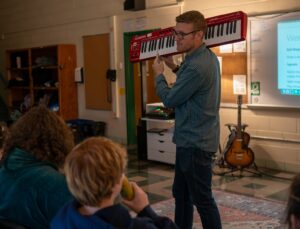
Referencing
One of the most important tools I implement daily in choral class is referencing. This is more of a “thought technology” than a hardware one, and I learned it from the music production world. Producers listen to other songs throughout their entire creative process. They might listen for the kinds of sounds used, the chord progression, the mix, the form or any other characteristic of the track. Producers go back and forth between their references and the song they are working on to make it sound better and more authentic to a specific style.
I use referencing in the choral classroom for pretty much anything, including vowel shapes, tone color, diction, dynamics, phrasing, emotion and style.
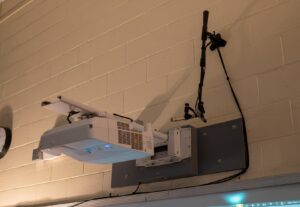
Playback
The concept of referencing is powerful, but it only makes an impact if there is a playback system in the room. Most students are used to hearing music on headphones or phone speakers. A quality sound system can make students hear and feel music like they never have before.
There are many variables when selecting a sound system, but look at how it addresses the size and shape of the room, volume, frequency response and multiple uses. Speakers have directionality and a specific angle from which sound emits, especially from the high-frequency drivers. The speakers should be mounted higher up on stands or hung from mounting points, set apart from each other, angled to cover the choir, and positioned far enough away from the choir so singers can get a stereo image from both sides.
Some choir rooms are deep enough to use a traditional two-way powered speaker like a DZR10, but some rooms, like mine, are shallow and wide. I use two DXL1K column array speakers hooked up to a digital mixer like a D3. These speakers have a super wide dispersion angle and really fill the room. If you only have one set of speakers for your program, you want to be able to use them for many things. I like mobile sound reinforcement speakers because they can pump out higher volumes while still providing clear frequency response, and they can be used for playback in the room, stage monitoring or as PA speakers in a performance setting. A good set of speakers can make listening to reference music exciting because it will fill the room and inspire your singers to perform like the pros.

Personal Monitoring
Do you remember the first time you heard yourself on a voice memo or answering machine? It didn’t sound like you — or what you thought your voice sounded like. I call this the voicemail paradox. We create a “print” of what we think our voice sounds like based on the internal vibrations in our head and the reflections we hear off surrounding surfaces. You can retrain your brain to match what you think you sound like with what you actually sound like using recording and playback. The more you hear recordings of yourself talking, the closer that print gets to your actual voice. The same thing happens when we sing.
I built a solfège app with built-in monitoring for my students. It allows them to hear themselves in real time by looping the device’s microphone directly to their headphones (wired headphones work best). It’s fun to see their faces when they hear their voices through the headphones for the first time.
When singing pop music, I have them reference an artist who sings in the style that we are going for and whose voice is in a similar range. They can then practice singing into the device’s microphone and try to match their voice to the artist. At the end of a 30-minute period, some of my students could do pretty accurate vocal impressions of Billie Eilish, Stevie Wonder and Bruno Mars. Try the Solfege Trainer app for yourself. Connect headphones and click Start Monitor.
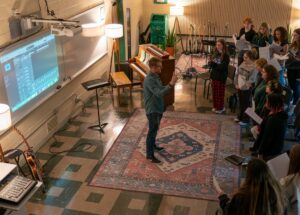
Group Recording
Why do choir directors constantly reminds students about vowel shapes, beginning/middle/ending consonants, dynamics and phrasing? Because we are the only ones in the room who can hear the group’s sound. Choirs have a version of the voicemail paradox as well because what they think they sound like as a group does not match what they actually sound like. If a choir can hear recordings of itself, students gain agency to address these things on their own.
We have a couple inexpensive small diaphragm condenser microphones at the front of the room in an XY configuration. These are connected to a Mac Mini running a DAW like Cubase through our digital mixer. This setup is a little complex, but you can try it by recording on your phone and playing it back to the choir on a Bluetooth speaker.
Once you have a recording and playback setup ready, record something you are working on in class. Give students prompts about what they should be listening for before you play it back and be prepared to be amazed. Warning: The first time students hear themselves, they will be shocked and a little horrified.
Here are some things that work with playback. Choirs think their dynamic contrast is much bigger than it actually is. Have them record a phrase with a crescendo, decrescendo or sforzando and listen back. They will hear the lack of contrast, especially if you play a reference recording of a professional group that demonstrates similar contrast well.
Middle and ending consonants are usually difficult for students to focus on because we do not always think about them when we talk. It’s easy to build that awareness when you record a passage and play it back for students. Ask whether the words are understandable and whether consonants line up. I like to add reverb to the recording to mimic the size and reflectiveness of the performance space when we talk about consonants. Larger spaces need larger consonants.
The use of recording is not limited to dynamics and consonants. Think about anything you work on in class — it will likely improve faster through recording and playback than traditional methods. The bonus is that it will create more independence in your choir. The first few times we record with a new choir, students are a little scared, but after a few sessions they gain confidence. A month into recording regularly, students in my beginning choir were asking to record sections of their music to work on specific elements. How cool is that?
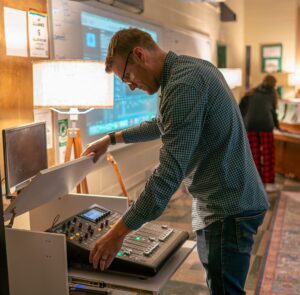
Combining Referencing, Recording and Playback
The real power comes when you combine referencing, recording and playback in your regular routine. When selecting reference recordings, find ones that demonstrate the things you want your students to work on. I rarely reference recordings of the exact songs we are rehearsing.
Instead, I tell my students, “Listen to how the BYU Men’s Chorus finishes phrases in this track.” “Check out the dynamics and phrasing of the Chicago Symphony Chorus in this section of Mozart’s ‘Requiem.’”
After they listen, rehearse as a group, record and play it back. Discuss what students hear, then repeat the process. The growth is staggering, and the speed is mind-bending!
With just a few pieces of gear, you can transform the sound of your group. The best part for me is involving students more in the interpretation of music and in musical decisions that are usually made by the director. With recording and playback, every student gets a chance to hear the choir from the director’s viewpoint. With referencing, every student can become an expert through comparison. Try it and see for yourself.










